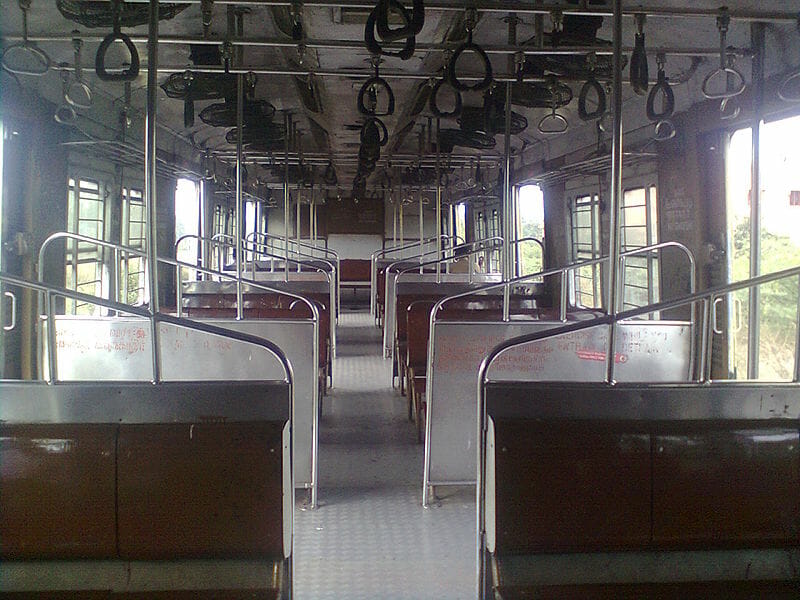The Chennai Metropolitan Area has seen rapid growth in recent decades. Industries have been clustered in various areas in the neighbouring districts of Chengalpet, Kanchipuram and Thiruvallur. For those who live in these regions and are employed here, connectivity to Chennai is a major hassle that has not been comprehensively addressed. The hardships faced by those commuting to and from Chennai to Gummidipoondi are examples of this.
With many industries, a SIPCOT complex and upcoming industrial parks, Gummidipoondi sees many commuting to the region for work. But poor rail connectivity is a problem that forces them to spend more time in transit and also use expensive private transport in case of travel to the airport or for other reasons to Chennai city.
Read more: Why Chennai’s suburban rail passengers are struggling to get their voices heard
Issues with train services in Gummidipoondi
The Chennai- Gummidipoondi route has the least number of train services on a daily basis compared to other areas such as Tiruvallur, Tambaram and Chengalpattu. The frequency and number of trains connecting other areas compared to that of Gummidipoondi are much higher.
Another key problem faced by commuters is that there is no peak-hour service to and from Gummidipoondi. There is also the absence of the 12-car service that is available along other routes.
The Chennai – Gummidipoondi route has one train every 30-45 minutes, not accounting for delays. If one misses a train at 9.45 pm, then the next train is most likely to arrive at the station only at 10.45 pm.
The trains that run on this route also face severe delays, laying anywhere between 30 minutes to an hour. It is only after when the trains from the Basin Bridge route are given signals, the train from Gummidipoondi is given the signal. Third and fourth lanes are not made available for trains from Gummidipoondi, unlike the trains from Tambaram or Thiruvallur.
The Chennai-Thiruvallur route has four lanes and trains from Chennai Central leave quickly without having to wait for other trains. But trains in the Chennai-Gummidipoondi route have to wait for Express trains to pass before they can be given the signal to proceed.
When complaints of the low frequency of trains and their poor capacity were raised by the commuters, their concerns have been brushed off by the Southern Railways. The Railways states that the reason the route has not seen more trains and augmented capacity is that there is insufficient income generation and poor patronage along the route.
While the Railways have come to this conclusion based on ticket sales, one can still find commuters travelling standing inside trains during peak hours. Many commuters have also had to make alternative arrangements due to the poor train service. Increasing frequency during peak hours will restore commuters’ faith in the railways as a viable means of the daily commute, thereby solving the issue of patronage.
Cleanliness and facilities in the train stations
Trains on the Thiruvallur and Tambaram routes have the latest service coaches. The trains are cleaned daily, painted afresh and maintained in good condition. In contrast to this, the Gummidipoondi trains are cleaned infrequently and have not been painted in decades.

The lack of cleanliness in the trains is a major turn-off for commuters and prevents them from opting to use the trains regularly.
Major stations such as Thiruvotriyur, Ennore, Minjur, and Ponneri are properly-lit and with fans and other amenities. But stations like Tondiarpet, VOC Nagar, Wimco Nagar, Anupambattu, Nandiambakkam, Kavaraipettai, Athipattu, Athipattu Pudunagar and Kathivakkam are all very poorly-lit, making it unsafe for commuters, especially women. There are no modern seats or proper facilities such as fans and drinking water. The toilers too are always locked or unclean and unusable.
The station also doesn’t have an adequate number of ticket counters, clocks or digital announcement boards.
This is in stark contrast to stations in nearby districts that also fall under the Chennai Metropolitan area.
Read more: Bringing the Tejas Express train to Tambaram
What commuters would like
Heeding commuters’ wishes and complaints would be key to improving the services in Gummidipoondi.
Introducing peak-hour services, and improving train frequency and punctuality are the need of the hour. If commuters perceive the train as a reliable mode of transport, this will lead to improved patronage and revenue. Upgrading the coaches to offer a better experience will also attract more commuters.
The stations along the route too must undergo renovation and basic amenities such as lighting, drinking water, digital announcements made even in smaller stations and better seating must be offered.
Ironing out operational issues to avoid delays such as allowing trains to use the fourth lane and not having to wait for express trains to cross can improve the efficiency of operations and avoid delays.